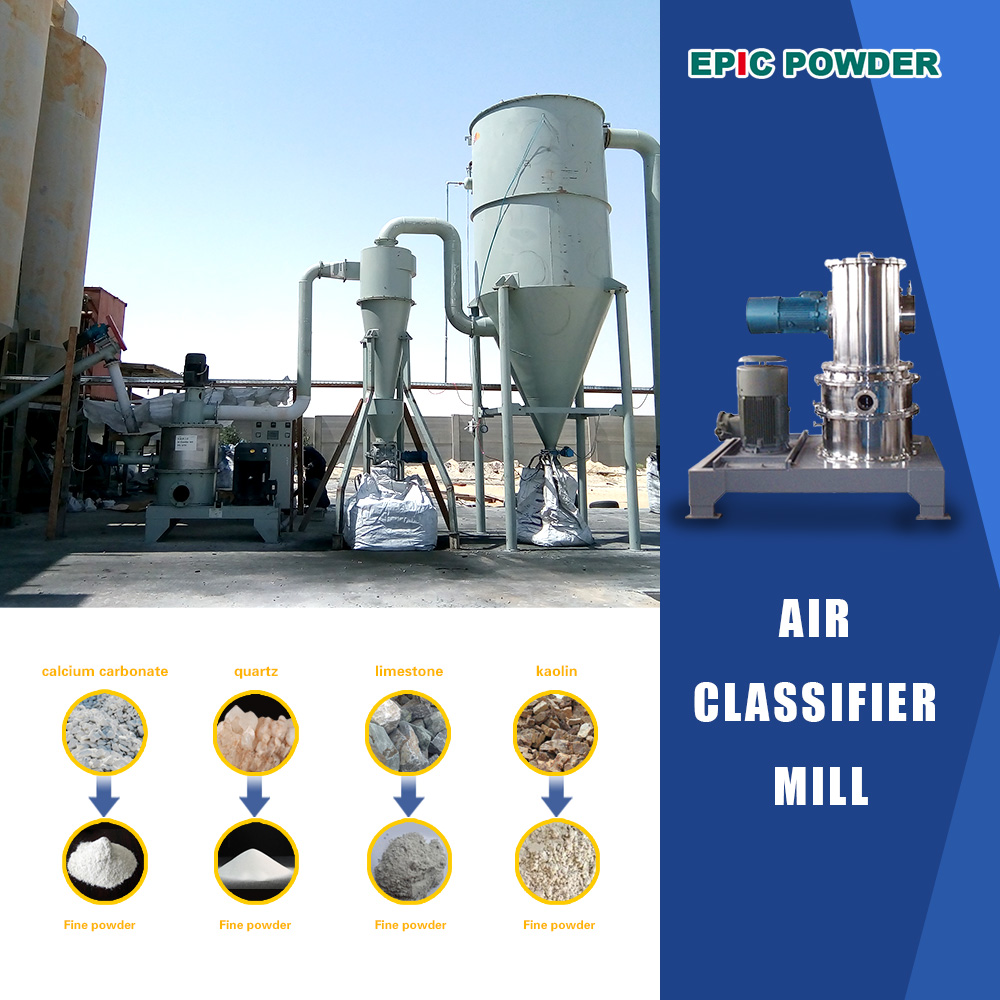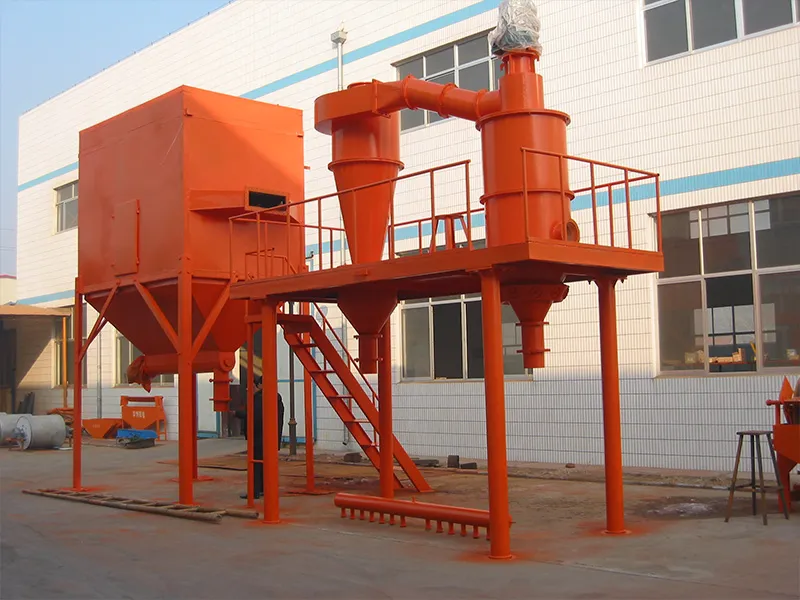In industries ranging from mineral processing and chemical manufacturing to the production of advanced materials, classification technology plays a pivotal role in defining the final product’s particle size distribution and overall quality. The selection of classification method and equipment directly influences production efficiency and economic returns. Among the various technologies available, the Single Spiral Classifiers and the Air Classifiers represent two fundamental approaches. This article examines their key differences to help industry professionals make well-informed decisions.

Working Principle
The single spiral classifier separates particles based on differences in their settling velocity in a liquid medium. Fine particles remain suspended due to slower settling rates and are carried away by the water flow through the overflow outlet. In contrast, coarse particles settle rapidly to the bottom of the trough, where rotating spiral blades transport them to the discharge port. This mechanism combines gravity sedimentation with mechanical conveying.
In contrast, the air classifier separates particles based on their behavior within a controlled air stream. Lighter, finer particles exhibit low inertia and are carried by the air through the classifier wheel openings into the collection zone. Heavier or coarser particles possess greater momentum, causing them to strike the outer chamber walls before settling for removal. This process relies on a balance between centrifugal force and aerodynamic drag.
Structural Composition
A single spiral classifier is primarily constructed from a trough, spiral blades, a transmission system, and a lifting mechanism. The spiral blades serve as the core component, facilitating both material transport and separation through rotation, while the trough offers the necessary space for sedimentation and process stability.
An air classifier, on the other hand, comprises a classifying wheel, drive motor, cyclone separator, dust collector, and an induced draft fan. The classifying wheel acts as the heart of the system, generating a centrifugal force field through high-speed rotation. Auxiliary components such as the cyclone separator and dust collector ensure efficient particle recovery and air purification.
Classification Particle Size
Single spiral classifiers are generally suited for coarse particle classification, typically handling materials above 0.15 mm. High-weir models, for instance, usually discharge overflow particles larger than 0.15 mm. While submerged versions can process somewhat finer materials, they are still predominantly used for relatively coarse separations.
Air classifiers excel in fine and ultra-fine classification, capable of achieving particle cuts ranging from D97: 3‒150 microns. Moreover, they offer stepless adjustment of product size, delivering high precision and flexibility in meeting stringent particle specifications.
Application Scenarios
Single spiral classifiers are widely used in metal mining operations. They often form closed-circuit grinding systems with ball mills to remove slimes, dewater, and improve overall mineral processing efficiency. They are also common in non-metallic sectors such as quartz sand production. Their function is to help control powder content within specific size ranges.
Air classifiers find extensive application in chemical, pharmaceutical, food, and new material industries, processing materials like calcium carbonate, kaolin, and quartz powders. They are also increasingly used in environmental and recycling applications, including the treatment of construction waste and solid residues, enabling resource recovery and reducing ecological impact.

Operation and Maintenance
Operating a single spiral classifier requires consistent feed to avoid blockages, along with periodic adjustments to parameters such as blade angle and water flow to maintain classification efficiency. Maintenance focuses on inspecting and replacing worn spiral blades, and keeping the feed inlet and trough clear of accumulated debris.
Air classifier operation demands stable airflow control, with particle size finely tuned through adjustments to the classifier wheel speed. Maintenance involves regular inspection of the classifying wheel and bearings—including lubrication—as well as cleaning filter bags in the dust collector to sustain optimal air quality and system performance.
Energy Efficiency and Environmental Impact
Single spiral classifiers consume relatively low energy due to their mechanical drive systems, though energy use rises noticeably at larger processing scales. Environmentally, their main drawback is high water consumption and potential wastewater generation. While design improvements can reduce effluent, wet processing remains inherently less eco-friendly.
Air classifiers incorporate high-efficiency motors and frequency control technology, resulting in lower energy consumption overall. Multi-stage classification systems can further enhance energy utilization. As a dry process, air classification requires no water and produces no liquid waste. Operating under negative pressure, these systems also minimize dust emissions—often below 40 mg/m³—making them compliant with strict environmental standards.
Conclusion and Perspective from Epic Powder
characteristics, target particle size, and environmental priorities. While spiral classifiers remain a practical and economical solution for wet classification of coarser materials, air classifiers offer precision, flexibility, and sustainability for modern fine powder applications—enabling cleaner, more efficient production across numerous industries.
At Epic Powder, we specialize in advanced air classification solutions. We are committed to delivering not only high-performance classifiers but also integrated systems that ensure superior particle precision, energy economy, and environmental stewardship. Our global team supports clients in sectors such as minerals, chemicals, pharmaceuticals, and new materials, helping them achieve both product excellence and sustainability targets with cutting-edge powder technology.

